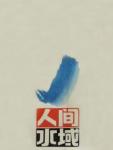Chapter 1 translator's words
Seicho Matsumoto is one of the Japanese writers who are familiar and loved by Chinese readers and movie audiences.As early as the 1960s, some of his works were introduced to our country.After the Third Plenary Session of the Party Central Committee, some of his works, such as, "Skewed Copy", ,, "A Biography", "Accomplice", etc., were translated into Chinese, which aroused strong repercussions among Chinese readers.The Japanese films adapted from his novels have also left a deep impression on the audience after they were released in various places.
Matsumoto Kiyoshi.Born in a poor family in Fuwang County in 1909.At the age of fifteen, he dropped out of school and became an apprentice just after graduating from elementary school.At the age of eighteen, he lived on the street and sold cakes for a living.Between the ages of nineteen and forty-six, in addition to being forced to serve in the military for two years at the end of World War II, he successively worked as a plate maker, painter, and advertisement designer in some small printing houses and Asahi Shimbun.After working hard all day long, the family of eight still had no food and clothing, so that sometimes they had to make a living by selling brooms long-distance.
In 1929, he was summoned and detained by the Kokura Police Station for reading progressive magazines such as "Literary Front" and "Zhanqi" and participating in activities of progressive literary youth.But the burden of life, the persecution by the police, and the discrimination in society did not kill his interest in literature.He read a large number of domestic and foreign literary works, and published his first novel "Xixiang Paper Money" in 1950.In 1952, he won the 28th "Akutagawa Award" for "A Biography", thus establishing his status as a writer.In 1956, he resigned from his job at Asahi Shimbun to concentrate on literary creation.His rough experience of more than forty years provided rich and colorful materials for his creation in the second half of his life.In the nearly 30 years since he entered the literary world, he has created more than 500 works (articles) with "literature is exposure" as his creed.Many of his works deeply expose the decadence and darkness of the capitalist political system, presenting shocking and ugly pictures of cannibalism to the readers.His works can be regarded as social textbooks and life textbooks for understanding contemporary Japan.
This is the masterpiece of Seicho Matsumoto's many false, evil, and ugly novels that expose the superstructure.The whole story unfolds step by step along two main lines, which are fascinating.The rise and fall of the female ink painter Fumiko Jiujing, a rising star in the painting world, is the first main line of the book.Although the young and beautiful Wenzi came from a famous family, her family was in decline. In order to enter the painting world and become famous, she sold herself to the powerful and powerful figures and became the darling of the publicity circle. Ke Shouzi is in a situation beyond reach.But the "funders" have evil intentions, and they hide evil intentions behind the money and effort.After Wenzi was destroyed, he was completely abandoned and became a poor victim.The process of Shimamura Riichi, a reporter from the academic department of a certain newspaper, cultivating and supporting new artists in the painting world constitutes another main line of this book.Although he had poured his enthusiasm and hope into Fumiko and Keshouko, he found that they had betrayed the original intention of learning painting—creating his own ink painting art, so he resolutely changed his course and devoted himself to cultivating the simple and innocent Yuriko Morisawa.
In the author's pen, these two lines are like the black and white two colors of ink painting, clearly and profoundly delineating the real scene of a specific "human waters" in the Japanese painting circle.The surface here is holy and elegant, but in fact it is extremely dirty; it seems to be calm, but in fact it is turbid.Introducing such works to Chinese readers can enable readers to have a comprehensive understanding of modern Japanese society.
Seicho Matsumoto was a prolific writer who, despite his age, is still working hard.We believe that more works of Mr. Seicho Matsumoto will meet with Chinese readers in the future.
translator
May 16, 1986
Shan Dong University

